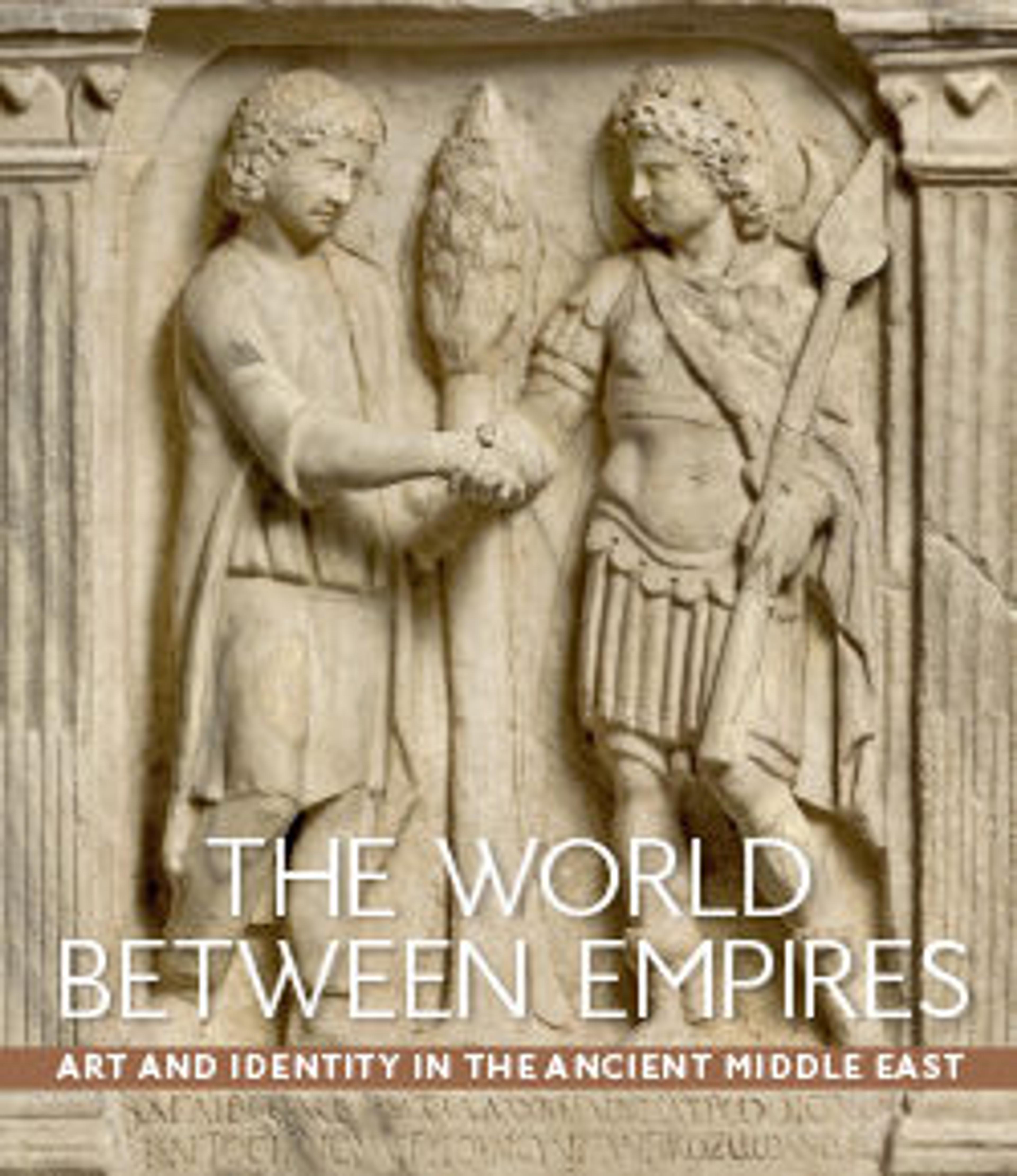Funerary relief
Inscription:
1 Alas!
2 Shu‘adel,
3 son of Zabdibol,
4 son of Mokimu,
5 the craftsman.
6 Died the 3rd day
7 of Kanun, the year
8-9 484.
Transliteration:
1 ḥbl
2 šʿdʾl
3 br zbdbwl
4 br mqymw
5 ʾmnʾ
6 myt ywm 3
7 bknwn šnt
8 4.100+80
9 +4
This relief is a type of funerary monument characteristic of the prosperous caravan city of Palmyra during the first three centuries A.D. Reliefs with a representation of the deceased and a short identifying inscription were used to seal burial niches in elaborately decorated communal tombs; those with a half-length or bust format became prevalent sometime after A.D. 65. After this early period, full-length representations such as this relief were used more frequently for memorials to children rather than adults.
Shown here is a young man or boy in high relief facing directly toward the viewer, dressed in a Greek cloak known as a himation, worn over a chiton, or tunic, and wrapped around the right arm like a sling. His left hand grasps a fold of the voluminous garment at waist level. His expression is serene, and his upraised eyes gaze at a point far beyond the viewer. Incised concentric circles indicate the iris and pupil of each eye. His short hair is depicted as a mass of wavy locks that cover his head like a cap, ending above his protruding ears. This relief depicts the deceased with the dress and coiffure of an adult, and without the attributes such as birds or bunches of grapes that Palmyrene children frequently hold in their memorial portraits, so it is primarily the use of the full-length format that suggests he may be a child. He stands in front of a dorsalium (draped cloth) affixed by circular pins to a pair of curving leafy branches. An inscription in Palmyrene Aramaic, visible at right, gives his name, lineage, and date of death. The months of the Palmyrene calendar were based on the earlier Babylonian calendar, while the years were reckoned according to the Seleucid era, which began in 312 B.C.
1 Alas!
2 Shu‘adel,
3 son of Zabdibol,
4 son of Mokimu,
5 the craftsman.
6 Died the 3rd day
7 of Kanun, the year
8-9 484.
Transliteration:
1 ḥbl
2 šʿdʾl
3 br zbdbwl
4 br mqymw
5 ʾmnʾ
6 myt ywm 3
7 bknwn šnt
8 4.100+80
9 +4
This relief is a type of funerary monument characteristic of the prosperous caravan city of Palmyra during the first three centuries A.D. Reliefs with a representation of the deceased and a short identifying inscription were used to seal burial niches in elaborately decorated communal tombs; those with a half-length or bust format became prevalent sometime after A.D. 65. After this early period, full-length representations such as this relief were used more frequently for memorials to children rather than adults.
Shown here is a young man or boy in high relief facing directly toward the viewer, dressed in a Greek cloak known as a himation, worn over a chiton, or tunic, and wrapped around the right arm like a sling. His left hand grasps a fold of the voluminous garment at waist level. His expression is serene, and his upraised eyes gaze at a point far beyond the viewer. Incised concentric circles indicate the iris and pupil of each eye. His short hair is depicted as a mass of wavy locks that cover his head like a cap, ending above his protruding ears. This relief depicts the deceased with the dress and coiffure of an adult, and without the attributes such as birds or bunches of grapes that Palmyrene children frequently hold in their memorial portraits, so it is primarily the use of the full-length format that suggests he may be a child. He stands in front of a dorsalium (draped cloth) affixed by circular pins to a pair of curving leafy branches. An inscription in Palmyrene Aramaic, visible at right, gives his name, lineage, and date of death. The months of the Palmyrene calendar were based on the earlier Babylonian calendar, while the years were reckoned according to the Seleucid era, which began in 312 B.C.
Artwork Details
- Title: Funerary relief
- Date: ca. 172
- Geography: From Syria, Palmyra
- Medium: Limestone
- Dimensions: 20 5/8 × 15 5/8 × 4 3/8 in. (52.4 × 39.7 × 11.1 cm)
- Credit Line: Purchase, 1902
- Object Number: 02.29.6
- Curatorial Department: Ancient West Asian Art
More Artwork
Research Resources
The Met provides unparalleled resources for research and welcomes an international community of students and scholars. The Met's Open Access API is where creators and researchers can connect to the The Met collection. Open Access data and public domain images are available for unrestricted commercial and noncommercial use without permission or fee.
To request images under copyright and other restrictions, please use this Image Request form.
Feedback
We continue to research and examine historical and cultural context for objects in The Met collection. If you have comments or questions about this object record, please complete and submit this form. The Museum looks forward to receiving your comments.
